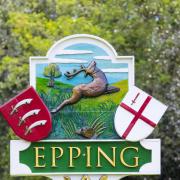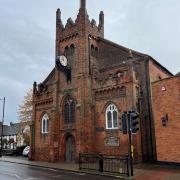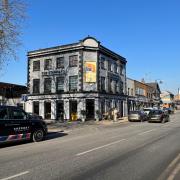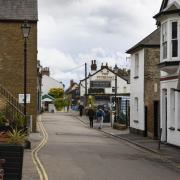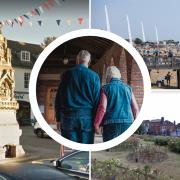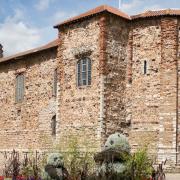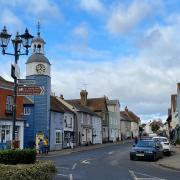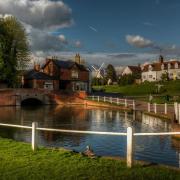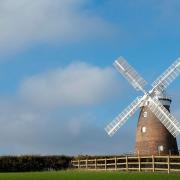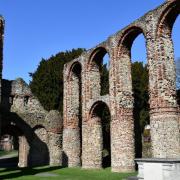Once a great vantage point for defending troops during the Napoleonic Wars, Danbury not only has a rich and fascinating history it also offers plenty to delight visiting walkers and nature lovers alike. Petra Hornsby finds out more
Sitting high, some 376ft above sea level, Danbury began to develop on an Iron Age hill fort where the village’s parish church stands today. The name Danbury almost certainly derives from the Saxon tribe of the Daeningas, who took up residence in the area until the Viking defeat of the Saxons at the Battle of Maldon in AD 991.
Danbury’s geological history can be traced back to the Ice Age, when moraine deposits were left by retreating glaciers heading northwards — creating The Danbury Ridge.
But it was the period following the Norman invasion that saw significant changes to the village and the surrounding area. William the Conqueror handed the region to Geoffrey de Mandeville, making him Earl of Essex. The Sinclair family (or Saint Clere) were assigned to administer Danbury and they took it upon themselves to take financial care of the church of St John the Baptist, extending it in 1233. Three wooden effigies were found in the church that date back to around the 13th century and one which was identified as that of William St Clere is now exhibited in The Louvre in Paris.
The Grade I listed church is the oldest building in the village and its location offers some great views of Danbury and the surrounding countryside. Its spire stands an additional 112ft high and local folklore tells of the damage caused to the spire by the devil who disguised himself as a monk. The church was renovated in 1866 by the architect Gilbert Scott but suffered significant bomb damage during World War II.
Another report which raised questions is that of the body of a knight laid to rest in the church. The body was disturbed in 1779 and found to be perfectly preserved. This was fiercely contested by the MP for Maldon at the time — Joseph Strutt — but, in 1985, Andrew Collins (a psychic investigator) claimed the body to be that of a Knight Templar.
Another of the village’s significant buildings, Danbury Palace, stands on the site of the mansion Danbury Place which was built in 1589 by Sir Walter Mildmay, Clerk to the Court of Henry VIII. Mildmay had done very well financially (thanks to Henry’s controversial dissolution of the monasteries) and he went on to become something of local benefactor. The mansion remained in the hands of the Mildmay family until the early 19th century when it fell into disrepair.
In 1832, a new building was erected near to the site of Danbury Place and this was bought by the church commissioner for the Bishop of Rochester and was given the name Danbury Palace. The palace remained under ecclesiastical ownership until 1892 when it was sold as a private residence. During World War II, it was used as a maternity hospital but now lies empty – earmarked for private residential development.
Part of the estate of the palace that is open to the public is Danbury Country Park, now owned by Essex County Council, providing a lovely spot for a picnic, for a stroll by one of the lakes or for a walk through the woodlands. In the grounds of the park is the Old Ice House, a storage facility used to keep the ice that would form on the lakes. This would then be used by the palace kitchen staff to create impressive ice sculptures which were presented at summer garden parties. The park is open from 8am to dusk and its features include ancient oaks, hornbeams, sweet chestnuts and stunning rhododendrons. Fishing permits for the lower lake are also available from the park ranger.
The village itself is very much blessed by its surrounding countryside comprising large areas of woodland and heathland which is owned and maintained by either the National Trust or Essex Wildlife Trust.
Among the highlights is Blakes Wood. Owned by the National Trust, Blakes Wood is made up of 100 acres of ancient woodland which, in the springtime, offers a fantastic display of early woodland flowers, including an impressive display of native bluebells.
Danbury Common was once effectively maintained by the grazing animals of the local population who would also cut back scrub which they used for fuel. This would help to create open terrain and encourage the re-growth of the plant life. As the second largest heathland in Essex, the National Trust now has the task of preserving the common and this essential habitat for wildlife.
Lingwood Common is a mix of trees and open clearings and, because it has some special and varied heathland plants, is now a designated area of Special Scientific Interest. On the south-western edge of Danbury, Backwarden Nature Reserve also has plenty for flora and fauna enthusiasts to admire with woodland, heathland, streams and bogs providing a home for a great variety of wild flowers, reptiles (including adders), birds and insects.
There are many walks to be taken around the village and its wonderful landscape, which includes commons and reserves. Many of these walks take in the major places of interest and afford wonderful hilltop views. The war memorial at Elm Green has views over the Chelmer Valley and, on a clear day, Stansted Airport’s control tower can be seen. A map and guide to the village is downloadable from the local parish website or hard copies are available from their offices situated at The Old School House on Main Road. Other walks can be downloaded for free at www.walkinginessex.co.uk.
After a good, hearty walk, it is comforting to know that Danbury can offer its visitors a good choice in the way of refreshments. The Griffin, The Bell and the Bakers Arms have all got their own history of hospitality and provide comfort and respite for the weary and thirsty walker.
If a refreshing post-ramble cup of tea is preferred, then at the heart of the village opposite the green at Eves Corner, is the lovely and award-winning tea room, Tea on the Green, which is much appreciated by both locals and visitors.
If a walkabout is on the agenda this autumn, then Danbury, situated in the Borough of Chelmsford, is a great location to consider. With its fascinating history and impressive menu of countryside delights, it represents perfectly the beauty and intrigue that can be frequently found within the county of Essex.




